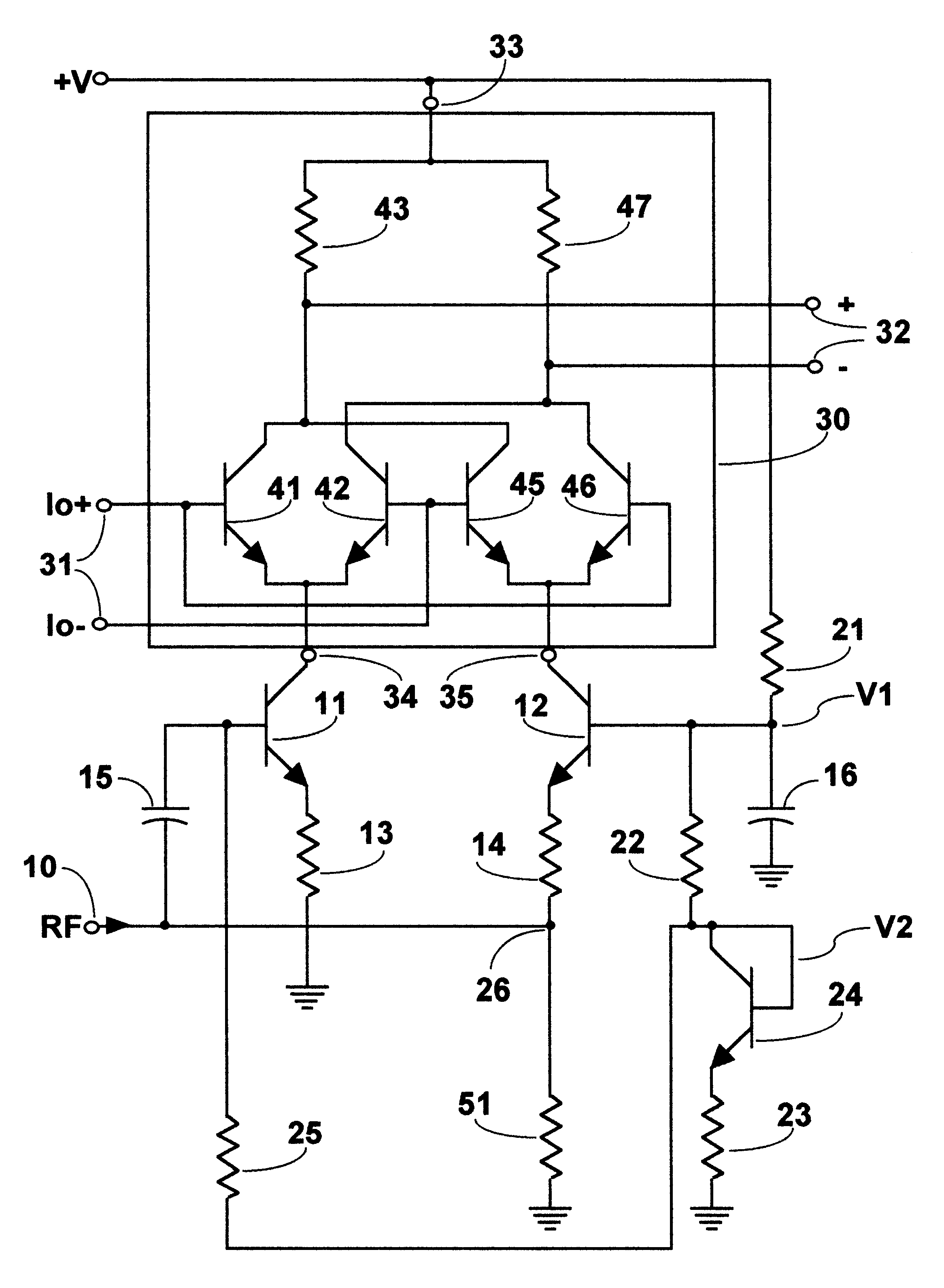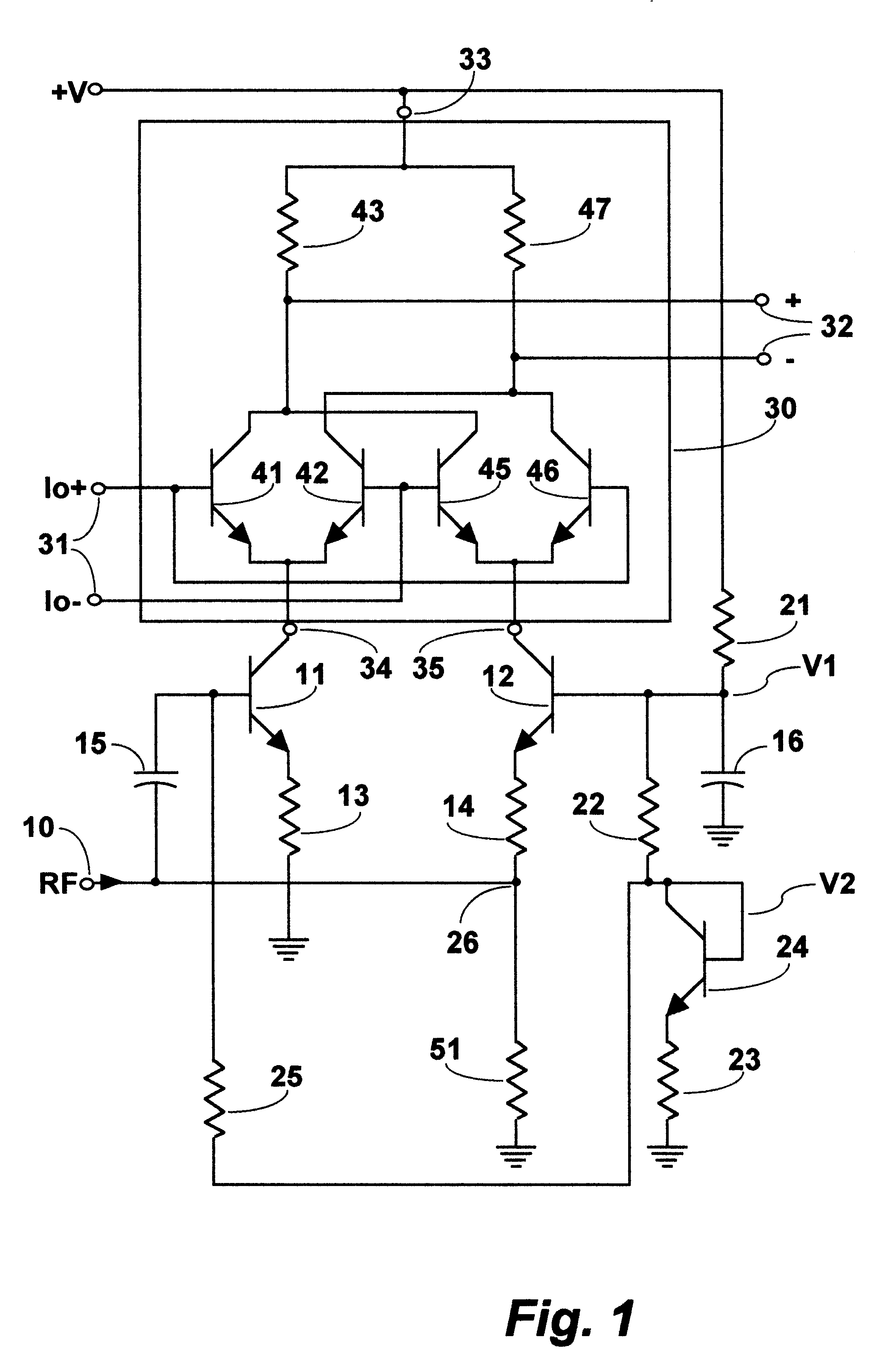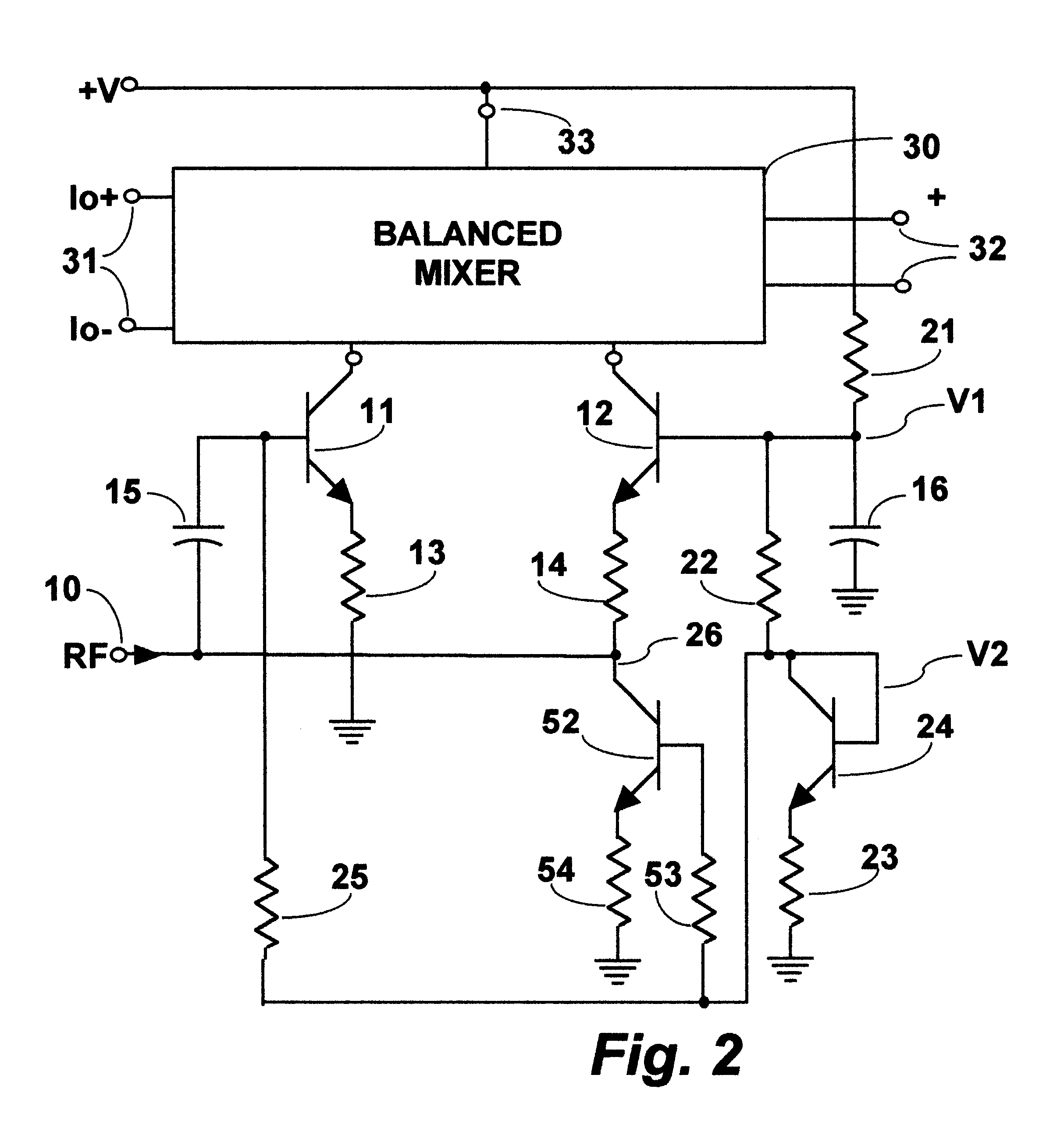Low voltage mixer
a low-voltage mixer and mixer technology, applied in the field of low-voltage mixers, can solve the problems of reducing the dynamic range of the typical balanced mixer operated with such a low supply potential, affecting the efficiency of some additional elements, and causing the addition of additional expense and inefficiency of some additional elements
- Summary
- Abstract
- Description
- Claims
- Application Information
AI Technical Summary
Problems solved by technology
Method used
Image
Examples
Embodiment Construction
In FIG. 1 the mixer is provided with a single ended input port 10, for receiving radio frequency (RF) signals. The mixer is energized for operation with operating power via a power terminal +V and ground terminals. In this example the mixer illustrated is intended for use with a low voltage power source, a 3 volt battery, not shown. Input signals received via the single ended input port 10 and being of desired frequencies are converted by a balanced mixer 30 to output signals which are provided at a balanced signal output port 32.
The balanced mixer circuit 30 includes a first differential amplifier having first and second transistors 41 and 42, and a second differential amplifier having first and second transistors 45 and 46. Collectors of the first transistors 41 and 45 are connected together to a load resistor 43 and collectors of the second transistors 42 and 46 are connected together to a load resistor 47. A plus terminal of a balance output port 32 is connected at the junction ...
PUM
 Login to View More
Login to View More Abstract
Description
Claims
Application Information
 Login to View More
Login to View More - R&D
- Intellectual Property
- Life Sciences
- Materials
- Tech Scout
- Unparalleled Data Quality
- Higher Quality Content
- 60% Fewer Hallucinations
Browse by: Latest US Patents, China's latest patents, Technical Efficacy Thesaurus, Application Domain, Technology Topic, Popular Technical Reports.
© 2025 PatSnap. All rights reserved.Legal|Privacy policy|Modern Slavery Act Transparency Statement|Sitemap|About US| Contact US: help@patsnap.com



